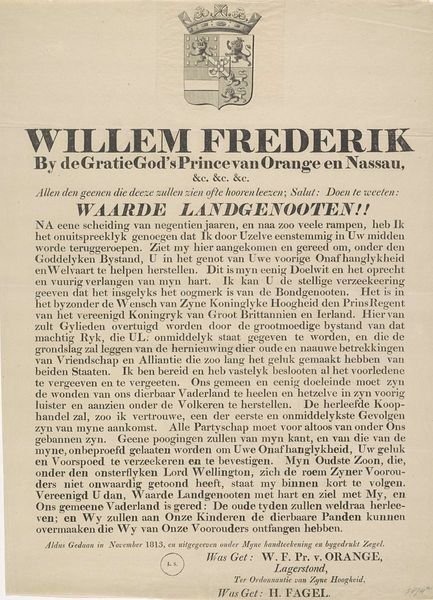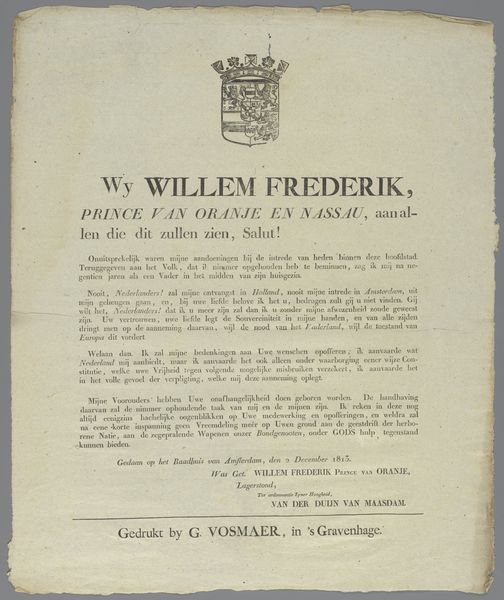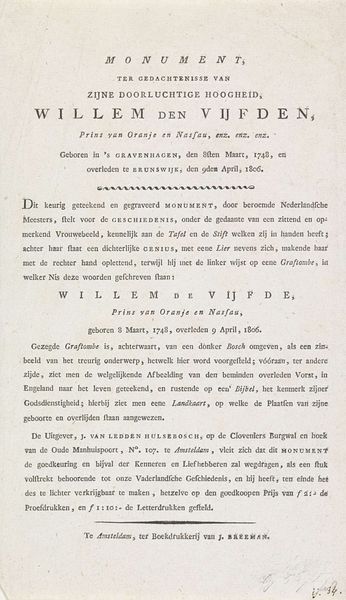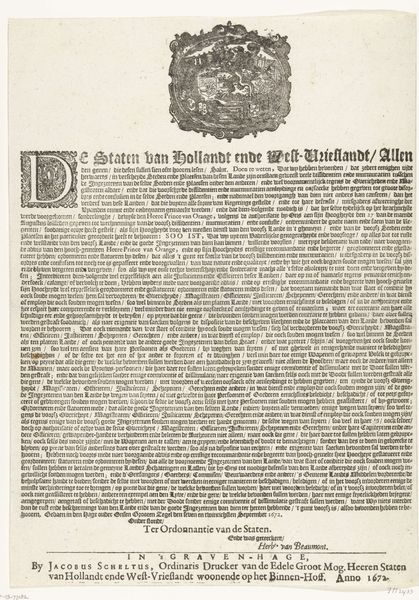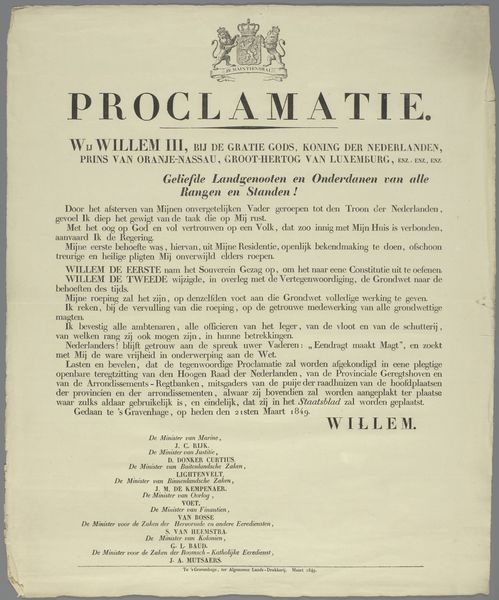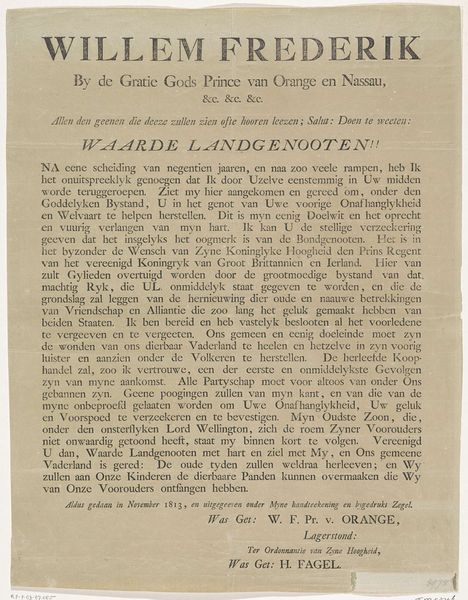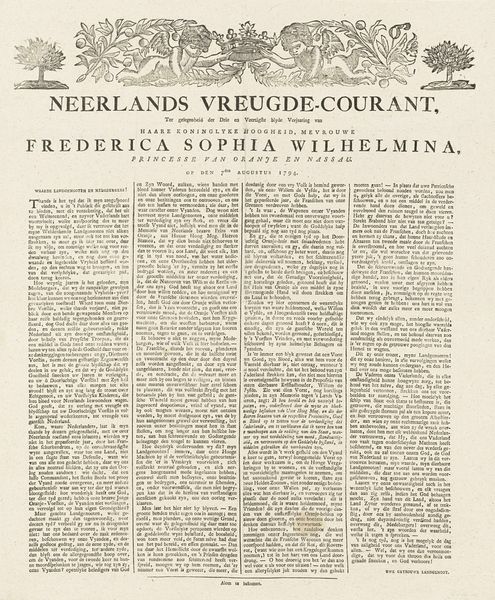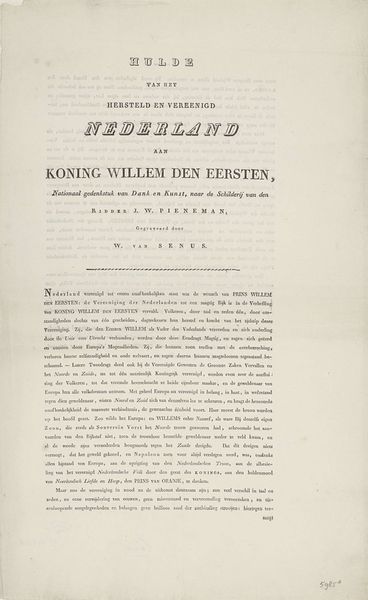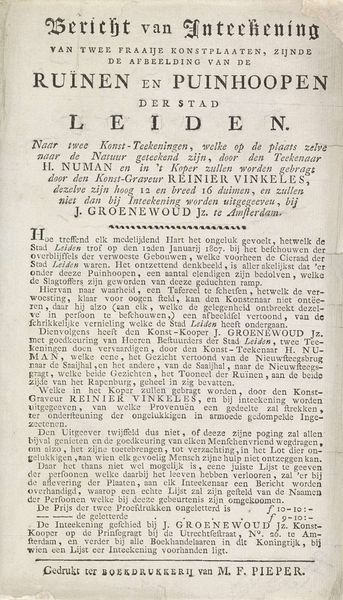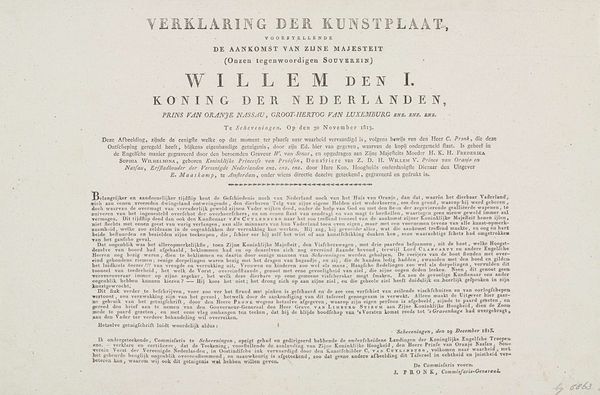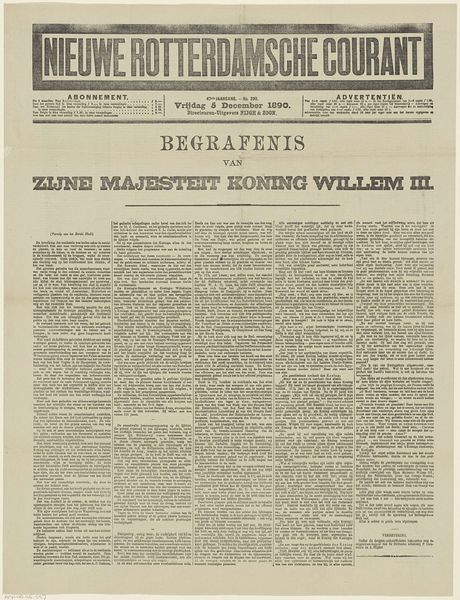
Terugkeer prins van Oranje (later Koning Willem I) in Nederland, 1813 1813
0:00
0:00
#
portrait
#
neoclacissism
# print
#
calligraphy
Dimensions: height 51.2 cm, width 41 cm
Copyright: Rijks Museum: Open Domain
Curator: This intriguing print documents a pivotal moment: the return of Prince Willem of Orange, later King Willem I, to the Netherlands in 1813. Editor: It's visually quite austere. Mostly text, except for the heraldic crest. Almost feels… functional, like a public announcement more than a celebratory artwork. What feeling do you draw from it? Curator: Considering the tumultuous period after French occupation, I perceive resolve rather than jubilation. Willem is careful in his choice of language, his manifesto to his “dear compatriots” expresses restoration, national healing, promising renewed prosperity by reassuring people about independence. Editor: He's actively positioning himself. Notice he mentions the assistance from "His Royal Highness the Prince Regent of the United Kingdom." Aligning himself with Britain projects a certain… legitimacy. Curator: Precisely! Neoclassicism, the prominent style of the era, embraced these notions of order and stability. Editor: So this isn’t simply an announcement, it's carefully crafted political messaging distributed through a print. What are the cultural implications here in terms of imagery? Curator: The very act of creating a reproducible image implies widespread distribution and accessibility. Though calligraphy does represent fine art, creating multiples also acknowledges that power resides in reaching a large population at a specific period in time. This work’s function also shows that it’s more important to express shared heritage than focus on his authority alone. It serves as evidence to encourage others in their experience. Editor: So while visually modest, its socio-political ambitions were grand, connecting Willem's return with themes of national revival and forging alliances to legitimize his place as the nation's new head of state. Curator: Yes, it invites a more thorough reflection on the influence of politics, print culture, and identity formation within this very specific timeframe of rebuilding in 1813. Editor: This reading reveals how we should interpret this moment. By reading an image this way, we find that visual choices become indicative of so much more, like nationalism, legitimacy, alliance-building. The object has now shown how political will, power, and identity formation play on paper, so to speak.
Comments
No comments
Be the first to comment and join the conversation on the ultimate creative platform.
